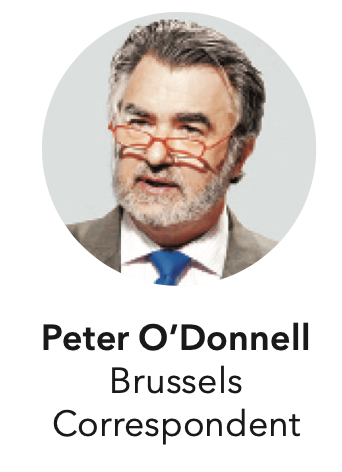‘Dogma’ About Innovation vs. Access Impeding EU Fixes for Rare Diseases
Rare disease stakeholders speak out ahead of anticipated EU changes.

Debate on tackling rare diseases is reaching a fever pitch in Europe as expectations mount over the upcoming changes to European pharmaceutical legislation. Hardly a week goes by without a patient group, a scientific society, a European Parliament committee, an industry association, or a coalition of stakeholders staging a rare diseases event to press its particular priorities for better provision within European healthcare systems. The consequence is a flood of rhetoric about common interests and joint programs on everything from clinical trials to research incentives. But innumerable sharp differences on specifics are easily discernible among the tide of earnest declarations.
Patients are naturally among the most vocal advocates of improvement, with repeated evocations of the huge cumulative numbers. Official figures indicate 36 million people in the EU live with a rare disease, and there are more than 6,000 distinct rare diseases in the EU, of which most are of genetic origin (and most of them manifest in childhood). Patients want more and better research into diagnostics and therapies, and they want easier and faster access to the products that emerge. But even among patients, the needs of each group differ, and tough choices are going to be necessary over whether to prioritize old or young populations, ultra-rare or widely burdensome diseases, or conditions that cost the economy the most.
Policymakers and government are starting to recognize more clearly that there are risks—in terms of health and of practical politics—in neglecting such a large segment of the population. Gently pushed by European Union recommendations over the last decade, they have begun to put in place measures both to create national rare disease plans and to pool scarce resources spread across the EU, enabling patients and professionals to share expertise and information. But governments are also confronted increasingly with the challenges of paying for some of the dramatically more expensive rare disease therapies now coming onto the market, with poorer countries pushing for assistance in procurement, while health campaigners and other civil society organizations are openly skeptical of the value that drug firms claim for many of these medicines.
The pharmaceutical industry has also, inevitably, been prominent in the discussions, consistently highlighting the potential of new approaches to research and development and arguing forcefully for a regulatory environment that encourages and is prepared to incorporate innovation into healthcare. The industry’s characteristic expressions of optimism are colored more darkly by repeated premonitions of declining competitiveness in the face of an unhelpful operating context, and by rejection of what some companies see as simplistic one-size-fits-all approaches to promoting patient access.
Now all these stakeholders are confronted simultaneously with these questions of promoting innovation, overcoming inequities in access, and balancing healthcare budgets, as the revision of the EU laws is expected to finally get underway in 2023. This legislative marathon will cover not just pharmaceuticals in general, but also the rules specific to orphan drugs and pediatric medicines. In the run-up to this major rewrite, EU member states are showing a new degree of energy in promoting debate on rare diseases, with coordinated conferences among France, Czechia, and Sweden—the last, the current, and the future holders of the rotating six-month presidencies of the EU council of health ministers.
The received view is that cooperation, collaboration, and dialogue can resolve the innate divergences of view among the different stakeholders—and the spirit of the EU itself, built as it is on decades of compromise in the common interest, is repeatedly invoked as a clarion call. There is much to be gained from working together, particularly on rare diseases, where patients (and relevant expertise) tend to be widely scattered across countries. But industry’s calls for making the EU more attractive for investors and for the introduction of a streamlined and flexible approvals system are running headlong into regulators’ hesitations over the use of real-world evidence and accelerated pathways, into payers’ resistance to high price tags for unproven therapies, and into patients’ concerns that many needs are still going unmet and many treatments are available only to restricted populations.
Hard not to ponder whether Nathalie Moll, director general of the European Federation of Pharmaceutical Industries and Associations (EFPIA), the main industry group, was expressing confidence or concern when she remarked at the end of October: “I hope that the revision of the pharma legislation can be a catalyst for Europe to shake the access-vs.-innovation dogma.”

Funding Cuts Threaten Diversity in Clinical Research
June 27th 2025In this video interview, Kyle McAllister, co-founder, CEO, Trially, discusses how recent federal funding cuts are likely to undermine research focused on underrepresented populations, and why long-term investment in community-based studies is essential to closing persistent health equity gaps.
Unifying Industry to Better Understand GCP Guidance
May 7th 2025In this episode of the Applied Clinical Trials Podcast, David Nickerson, head of clinical quality management at EMD Serono; and Arlene Lee, director of product management, data quality & risk management solutions at Medidata, discuss the newest ICH E6(R3) GCP guidelines as well as how TransCelerate and ACRO have partnered to help stakeholders better acclimate to these guidelines.
FDA to Launch National Priority Voucher Program to Speed Drug Reviews for Critical Therapies
June 18th 2025Under the new initiative, companies may receive a voucher enabling FDA review to be shortened from the standard 10–12 months to just 1–2 months following final application submission if the drug addresses US national health priorities.